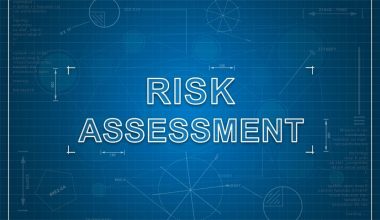Harassment at work is common, but most workplaces don’t discuss it openly. Harassment at work makes the workplace unhealthy and dangerous. Sexual harassment is not the only kind of harassment that can happen in the workplace, despite what most people think. In fact, many types of harassment in the workplace are not reported because they are not seen as sexual. As a company, you should take this matter extremely seriously. If it’s not handled right, it can lead to lawsuits, unhappy employees, and a drop in the number of employees. Furthermore, in this article, we will discuss harassment in the workplace with examples, types, the law, and finally, how to stop or deal with it.
Harassment at Workplace
Harassment at the workplace is when an employee or group of employees is treated in a way that makes them feel bad or makes them feel scared. A person who harasses others at work wants to make them feel unsafe and uneasy.
Human rights and occupational health and safety laws have a broad definition of harassment in the workplace. thus Harassment can be done with words, actions, offensive pictures, physical contact, or by trying to scare someone. It may also include having rumors spread about you at work or online.
Examples of Harassment at Workplace
There are numerous examples of workplace harassment. When the word “harassment” is used in the workplace, most people immediately think of sexual harassment, which typically involves a male supervisor who demands that a female subordinate accept unwanted sexual advances or requests for sexual favors in exchange for favorable work conditions. Although it is a common form of harassment in the workplace, sexual harassment is simply one of many examples of workplace harassment. Some other examples are:
#1. Unreasonable Work Performance Interference
One example of harassment is a boss or coworker who regularly removes and hides the victim’s job-related tools from his or her workstation.
#2. Displaying Offensive Pictures or Objects.
This could happen if the workspace of a person of one race is next to the workspace of a person of another race, and the first worker puts up pictures or drawings that the second worker thinks are racist. When the worker who put up the offensive item is asked to take it down, he either refuses or puts up another offensive item soon after.
#3. Put-Downs or Insults.
Another example of harassment in the workplace is when a supervisor repeatedly ridicules a subordinate for speaking in an unusual manner
#4. Exclusive Strategies.
This can happen if a supervisor repeatedly doesn’t invite a subordinate of a different race, sexual orientation, etc. to staff meetings or doesn’t tell the employee about social events or opportunities to advance in the company.
However, This list doesn’t have every example of harassment in the workplace. To determine if a claim for workplace harassment based on such conduct is likely to succeed, each instance of harassing conduct must be evaluated individually.
Types of Harassment at Workplace
There are many types of harassment in the workplace, therefore It’s critical to understand them and what you can do to prevent them from occurring.
Harassment at the workplace can take many forms, including verbal or physical harassment, requests for sexual favors, mental or emotional abuse, and so on. There are five main types of harassment in the workplace. They are:
#1.Verbal Harassment
People who are verbally harassed at work often have to deal with a constant battle for the destruction that puts their health and career at risk. Thus, Verbal harassment includes insults, rude gestures, and unjustified criticisms.
Since this isn’t physical violence, it can include insults like fat-shaming jokes, hurtful comments, and unwanted taunting. This makes it hard to spot. Since this is a gray area, HR managers and leaders must be on the lookout for these kinds of harassing actions.
#2. Psychological Harassment
Psychological harassment is similar to verbal harassment but this type involves withholding information. Such harassment is associated with mental breakdowns, low self-esteem, and self-deprecation.
Psychological harassment includes taking credit for others’ work, In other words, imposing impossible deadlines, forcing someone to work outside their job scope, etc. this type of harassment at the workplace is Deliberate psychological bullying.
#3. Online Harassment
Due to pandemic concerns, many companies have gone remote over the past year and a half. As an increasing number of employees work primarily from home, the lines between work and home have blurred. Online harassment is more common than office harassment. It can occur during and outside of work and includes sharing personal details about a coworker in a mass chat, spreading lies about a victim in an office chat, sending unwanted sexual messages to a coworker, and others. Online harassment should be stopped immediately, and the perpetrators must be disciplined by employers.
#4. Sexual Harassment
Sexual harassment is a type of sex discrimination that is against the law. it can happen to both men and women. This type of harassment can include things like showing sexual pictures or pornography, making a sexual comment, or touching someone without their permission. Sexual harassment can happen in one of two ways: either in a hostile work environment or in exchange for something.
#5. Workplace Violence and Physical Harassment
Workplace violence is a form of harassment at the workplace that involves making threats or attacking someone physically at work. This kind of behavior at work could be illegal and lead to charges. We should never let people touch us when we don’t want them to. Even playfully pushing someone should be against the rules, because what matters is whether or not the person is not ok with it. Physical harassment could be any of the following things:
- Violence threatening
- If you hit, kick, or push someone,
- Physically intimidating or threatening behavior
- Property destruction/throwing things
Sexual Harassment at Workplace
The #MeToo movement swept the U.S. in 2017, bringing new attention to sexual harassment in the workplace. However, there were already protections in place before that.
Sexual harassment at the workplace is any sexual behavior that makes you feel hurt, uncomfortable, afraid, or rueful. Usually, there are two kinds of sexual harassment at work.
#1. Reciprocity
This is when you have to agree to a sexual act or sexual advances in order to get a job, a promotion, or any other benefit at work that you would normally get based on your skills and abilities.
#2. A Hostile Work Environment.
This is when someone makes unwanted sexual advances, asks for sexual favors, or acts in other ways that are sexual. Examples are:
- remarks about someone’s face, body, or clothes.
- indecent remarks.
- question or comment about your sex life.
- staring or looking at the body of another person.
- showing sexually explicit materials in a shared workspace or sending and sharing them via email.
#3. Physical Assault
This type of sexual harassment at the workplace is when someone makes direct physical contact with you without your permission. This includes hugging, kissing, caressing, sexual assault, and rape.
Harassment at Workplace Law
Under the Employment Equality Acts of 1998–2015, it is against the law to harass an employee at the workplace. Moreover, this includes temporary workers and trainees. and also. co-workers, the employer’s clients, customers, or other business contacts, and anyone else the employer could reasonably expect the worker to come into contact with.
Section 14A(7) of the Acts defines harassment as any unwanted behavior based on any of the reasons for discrimination that violates a person’s dignity and creates an intimidating, hostile, degrading, humiliating, or offensive environment for the person.
In 2012, the Department of Justice, Equality, and Law Reform updated the Code of Practice on Harassment at the Workplace. The goal of the code is to encourage the creation and use of policies and procedures that make sure no one is facing harassment at work and that everyone’s dignity comes first. The rules of the code can be of use as evidence, and if they are important, any criminal or other court cases can take them into account.
The code says that employers should come up with, implement, and keep an eye on a policy that covers all forms of harassment at the workplace. The policy should be made with the help of employees and trade unions. It should explain what harassment is, who is in charge of putting the policy into action, and how complaints will be handled.
Harassment at Workplace Lawyer
Harassment at the workplace is illegal, but it is not always easy to fight and win. To get justice and money, you need the best lawyers on your side.
In and out of court, Katz Banks Kumin’s lawyers are the best in the country when it comes to workplace harassment. Their track record proves they fight for clients’ rights. They have helped people from all backgrounds who faced workplace harassment, including not getting promoted, being harassed, being physically hurt, and more. In settlement talks and mediations, they are tough negotiators, and in jury trials, they are respected trial lawyers.
How Do You Stop Someone From Harassing You
If you’re facing harassment and it’s not because of discrimination under the Equality Act, this is how you stop someone from harassing you.
#1.Telling the Police About Harassment
You can file a police report for harassment on a criminal harassment charge against someone if Someone has bothered you more than once, and it made you feel upset or scared.
The police will send the case to the Crown Prosecution Service (CPS) if they decide to charge someone. People can be taken to court by the CPS, which is what is called “prosecution.” If the CPS decides not to go to court against the person who was bothering you, they must tell you. When needed, we are well-known trial lawyers for cases that have to be settled in front of a jury.
#2. Taking Legal Action for Harassment
You can go to civil court against someone if:
- They have bothered you more than once, including by stalking you. This has made you feel upset or scared.
- Getting an “injunction” means that the court tells the person who is bothering you to stop. You can also get money from the court.
- If the person keeps bothering you after you get an injunction against them, they have broken the law and could go to jail.
What Are 3 Actions to Take if You’re Experiencing Workplace Harassment?
Actions to Take if You’re Experiencing Harassment at Workplace.
- Note down what’s happening in your life.
- Talk to a lawyer for help.
- File a complaint.
What Behaviors Are Considered Harassment?
Harassment behavior can include but is not limited to, offensive jokes, slurs, epithets, or name-calling, physical attacks or threats, intimidation, ridicule, or mockery, insults or put-downs, offensive objects or pictures, and interfering with work performance.
What Are the Two Main Types of Workplace Harassment?
Here are the two types of harassment at work.
- Verbal/Written.
- Physical.
What Is the First Step You Should Take if You Are Being Harassed?
You can talk to your own boss, then talk to the boss of the person who is harassing you, or any other boss in the company. Explain what happened and request that person’s assistance in getting the behavior to end. The law protects you from reprisal (penalty) for reporting harassment.
How Should HR Deal With Harassment?
They will examine the evidence carefully and refer to the companies’ anti-harassment or workplace policies. They will even check to see if the person who is being accused of harassment has a history of it. If your witnesses made written statements, these documents will be scrutinized.
What Can You Do if You Are a Victim of Harassment at Work?
If you are being harassed at work, you must report it to your boss. If you are at ease, you should also inform the harasser that you find his or her behavior offensive. You can also speak with your parents, another adult, or the Equal Employment Opportunity Commission(EEOC). Find out if your company has a harassment policy.
What Is Unfair Treatment at Work?
Unfair treatment is when you treat someone on your staff badly because of who they are. It can make them sad, embarrassed, or even scared.
Related Articles
- HARASSMENT CHARGES: How to Press Harassment Charges
- LIVING WILL: Definition, Requirements, Templates (+How to Write Guide)
- CO WORKER CHRISTMAS GIFTS: Best, Simple & Inexpensive Gifts in 2023
- TERMINATION: Meaning, Law, Process & Employment Tips to Know
- LOW EMOTIONAL INTELLIGENCE: How to Know and Deal With It






